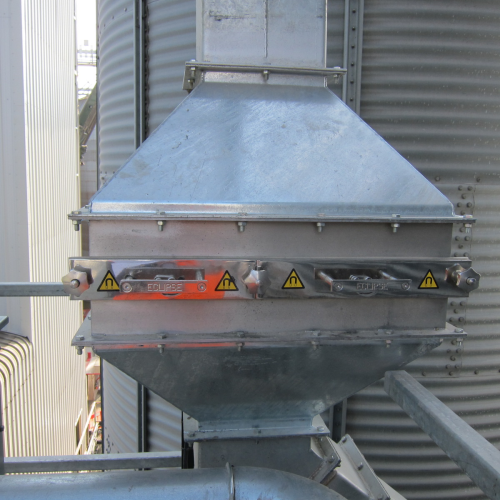
Simpsons Malt Ltd has installed a magnetic separator from Eclipse Magnetics to ensure the quality and integrity of its craft ale malt. As an independent maltster providing malt to the brewing, distilling and food industries worldwide, Simpsons Malt Ltd has two malting plants in the UK, one in Norwich, UK and another in Northumberland, UK.
Eclipse Magnetics installed the magnet at the very end of Simpsons Malt’s malting process. The malt falls through an extended section of pipework before it reaches the magnetic separator, allowing the housed grid to pick up any fine metal and para-magnetic contamination from the product.
The company
The craft maltster in Norwich has five roasting drums for the production of speciality-roasted malts, including both base malt and roast house production. With the capacity to produce over 68,000 tonnes of malt each year for ale, lager and speciality roasted malts; the maltster in Norwich was recently extended to accommodate the company’s bagging facilities and warehouse.
In order for Simpsons Malt Ltd to produce high quality, specialist white malt for brewing craft ale, the company buys malting barley from farmers or a merchant which is then processed at the Norwich plant. To achieve the end result of malt, the cereal grains typically go through a three step process of steeping, germinating and drying/roasting.
The raw barley is sorted and cleaned to remove any oversized or undersized particles. The grain is passed through a sieve to remove any particles that are under 2.5 mm, such as small damaged corns and dust. The residue that is collected at this stage is mostly dust and husk from the product, which can then be sold on as animal feed.
Steeping involves the absorption of water by the raw barley kernel which initiates germination. After sorting and cleaning, the grain is transferred into steep tanks and immersed in water. The process of steeping takes two days, whereby the barley is alternated between being submerged in water and drained, until its moisture content increases. The absorbed water initiates the germination, whereby rootlets emerge from the embryo of the kernel.
Housed grid magnet
The germinating barley is then transferred from the steep tank to the germination compartment, where the kernel’s protein and carbohydrate are broken down to open up the seeds’ starch reserves. This enables the product to be suitable for use by the brewery or distiller, as the starches and sugars in the malt are readily available. After several days, the germination process is then halted by drying, and the product is stored safely for 3 to 4 months in a clean environment to avoid contamination. The malt is also passed through de-stoners prior to milling and bagging to ensure to that any grain sized stones are removed. At this point, the malt is passed through the housed grid magnet, ensuring all contamination is effectively removed from the malt.
The Eclipse Magnetics housed grid magnet is suitable for the removal of fine metal and para-magnetic contamination from a range of dry free flowing products including grains. This high intensity magnetic housed grid offers high levels of contamination removal and fine particle separation in the most demanding processing environments. The unit is comprised of a 9,000 gauss rare earth magnet incorporated into an easy clean grid, which is secured into the housing by swing clamps to ensure that even pressure is generated around the food grade seal.






